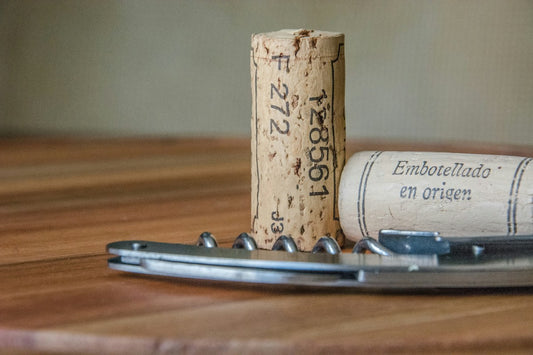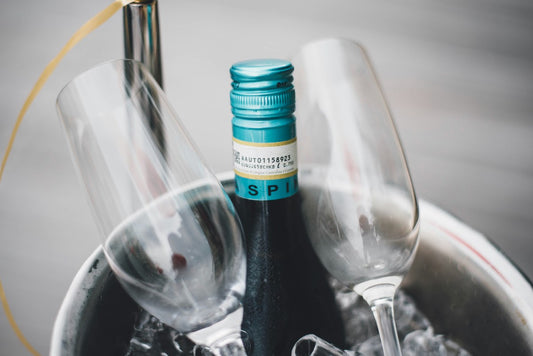How Long Does Fruit Last In The Fridge?
Norah Clark
There is a wide selection of different types of fruit on the market. As we wander along the aisles the options are vast, and we often buy too much. You may also buy fruit in bulk if you are not near a store.
After a couple of days, it becomes apparent that you've got over-ripe fruit. It is beneficial to know the length of time the fruit will last. If you have been gifted one of our popular fresh fruit hampers - this article will be highly beneficial.
Of course, you can simply store them in the refrigerator to ensure they don't go off too quickly. However, you must be aware of how long they will last.
What is the length of time that fruit lasts inside a fridge? Since there are so many varieties of fruit their shelf-life in the fridge can vary from a few days to a few months and can be influenced by a many aspects.
In this article, we'll explore different categories of fruits and the shelf-life of some of the most well-known fruit varieties.
What Affects The Shelf-Life Of Fruits?
Certain fruits last for two days, and some, two months. If you're wondering why they can have different timespans There are some things to consider.
- Moisture content plays an important part in all food items. The greater the amount of moisture, the shorter the shelf-life (if there are no preservatives).
- The ripeness of the fruits is a significant aspect in determining their shelf-life. The majority of fruits are picked before they are ripe. They are stored at extremely low temperatures, which makes them nearly dormant. But when they are taken to the stores, the ripening process continues at a fast pace.
- Another element that affects the shelf-life of freshly picked fruit or vegetable is the length of time it was stored after it was picked before it arrived at the supermarket.
When we talk about shelf-life we're discussing how long they'll last after they are fully mature but not necessarily starting from the day you purchased them.
The best thing you can do is observe the fruit, adhere to the timeframes, and look for physical changes related to spoilage.
Pomes
Pome fruits are a fruit that is created by flowers of plants. They are classified based on their structure. Each has a central core filled with seeds and surrounded by flesh.
The fruits in this category are apples and pears, kiwis, and quinces. There are a variety of kinds of each fruit, and all of them have their distinctive flavor, texture, and form.
The most important element determining a fruit's shelf longevity is the time it was picked, the conditions it was grown in, and the temperature it was stored in.
Apples are stored in cold storage for 2 to 12 months before they reach the market. When you purchase the apples, they'll last for two months in the refrigerator.
Pears have a little less shelf-life. They mature very slowly in the tree, and the clock begins moving much quicker when they are picked.
The best way to tell whether your pome fruit has gone bad is to look for signs that the flesh is dry and grainy, as well as the skin being stretched and discoloured. It must be thrown away if there are any signs of mold growth or spores on flesh.
Stone Fruit (or Drupes)
The stone fruits, also known as drupes, are any fruit derived from only one seed. The seeds are protected by a tough endocarp that we commonly refer to as the pit. The entire fruit is smothered with soft and juicy flesh and skin.
The most popular examples of drupes include peaches, nectarines, apricots and plums.
However, mangoes, cherries as well as avocadoes are also classed as drupes. They are classified as the sub-categories of drupes due to their biochemical structure.
These fruits are never classified in different categories due to their additional, more prominent traits. For instance, mangoes are better in the category of tropical fruit because of their place of origin and their seasonality.
The majority of stone fruits undergo an extremely fast ripening process which is why they are preserved and packaged for an hour before they are sold in stores, typically between 2-4 months, depending on the type of stone fruit.
Apricots are expected to last about seven to ten weeks in the fridge. Peaches have a shorter shelf-life of around 5 to 7 days when they are whole and 2 to 3 days when cut. Plums and nectarines have similar shelf lives to peaches.
The most reliable way to determine whether stone fruits are bad is to touch their flesh. If the fruit makes an indent when you press it lightly, it is beyond its best. Another sign that it is overdue occurs when its skin begins to develop brown spots or if mold begins appearing on top.
Berries
Berries are small fruit with typically vibrant shades. Different varieties of berries come with different tastes, sizes, and shapes. The scientific classification of the berries is any fruit created from a single flower's ovary.
Similar to drupes, other fruits are also in this category but are less well-known. Examples include bananas, chilli peppers, and grapes. Due to other characteristics that are more prominent, the fruits are better suited to different categories.
The most common berries are strawberries, blueberries, raspberries, blackberries, and gooseberries.
Berries are seasonal and, once matured completely (usually when they enter the market), can last up to 3-7 days before beginning to soften. They are very delicate in storage, and keeping them in the refrigerator is crucial.
In contrast to other fruits that can be stored outdoors (even if it reduces the shelf-life), the berries will turn soft after a few hours.
Raspberries don't have the longest life span ( 2-3 days) due to their thin skin and juicy nature. Strawberries tend to be a bit softer yet last for only a few weeks maximum.
Gooseberries and blueberries have tougher skin that is nearly leathery and helps to keep it in good condition for longer. They can last for about a week in the fridge.
Berries soften and become discoloured as they start to go away. However, they can also begin to mould fast, so be very careful!
Melons
Melons can be described as round and fleshy fruits with incredibly thick, hard skin. They are generally extremely sweet and ought to be tender but juicy. They are available in a variety of sizes. However, they are quite a bit bigger than the typical fruit.
Melons are grown on the ground in the form of large, sprawling vines. If the stem starts to crack, farmers are aware that this is the ideal moment to harvest the melons. This guarantees that the melons will be well-developed in flavour and hue.
The most common melons are watermelon, cantaloupe, honeydew, canary, and more.
Whole melons also last longer than those cut. They have a tough rind that has to be removed before the flesh is eaten.
The fresher your melon, the longer you'll be able to preserve whatever you've yet to consume.
Melons last about two months in the refrigerator if they are whole and for about four to seven days following having been cut.
Once melons are past their peak, their flesh begins to become dry and rough. The colour of the flesh will begin to fade, the skin begins to soften, and some may even develop mold.
Citrus
Citrus fruits are fruit which grows in orchards that flower. They are divided into segments and have an extremely thick rind which must be removed before eating. The rind is typically used as a flavouring agent since it has an intense flavor.
Citrus fruits include oranges, grapefruits and limes, lemons, and pomelos.
Each of these fruits comes with various flavours ranging from sweet to tart and sour. This helps extend the shelf life since, chemically, certain components keep one fruit longer than others.
Citrus fruits are extremely nutritious and long-lasting because of their thick skin. They can be stored in the fridge for up to three to four weeks.
After they are removed from the branch, the fruits will have around a 3-week shelf-life at room temperature.
Certain climates have to import their citrus, and they are chilled until they are almost not mature in the first place. After they're reintroduced to the market they can last for three to four months.
Some citrus fruits can also develop mildew, however, this doesn't necessarily mean they've gone bad. Clean the white remnants with a clean, damp cloth and eat straight away.
The most effective way to tell if citrus is gone is to test if the flesh's inner side is smooth. If you press on the flesh, and it creates an indent even if it's free of blemishes, the fruit is beyond its best.
Citrus will not change hue unless they're beyond their expiration date. The skins dry up and turn brown or will turn soft.
Tropical Fruits
Tropical fruits are produced in climates that have high temperatures.
The fruits that fall under this category include pineapples, bananas, mangoes, passionfruit, lychees and numerous others.
They vary in shape, size, texture, colour and taste, making them more difficult to store.
We will only talk about the shelf-life of the most popular fruits within this category.
When fully matured, pineapples last approximately 4 to 5 days in the refrigerator, whereas mangoes and Kiwis will last longer due to their skin types, about 3-4 weeks.
The passion fruit also can last for a long time in the refrigerator. Based on how ripe the fruit is, it could last for 2 to 5 weeks.
The best method to tell whether the fruit is overripe is to test their flesh to feel if it is soft and examine their skin for any signs of bumps.
Recommended fruit storage times in the fridge:
|
Apples |
3-4 weeks |
|
Apricots (ripe) |
4-5 days |
|
Avocado (ripe) |
3-5 days |
|
Blueberries |
1-2 weeks |
|
Cherries |
4-7 days |
|
Cranberries |
3-4 weeks |
|
Gooseberries |
2-3 days |
|
Grapefruit |
2-3 weeks |
|
Grapes |
5-7 days |
|
Guava (ripe) |
3-4 days |
|
Kiwi (ripe) |
5-7 days |
|
Mango (ripe) |
5-7 days |
|
Melons (ripe) |
7-10 days |
|
Nectarine (ripe) |
3-5 days |
|
|
2-3 weeks |
|
Peaches (ripe) |
3-5 days |
|
Pear (ripe) |
5-7 days |
|
Pineapple |
3-5 days |
|
Plums (ripe) |
3-5 days |
|
Pomegranate |
1-2 months |
|
Prickly pear (ripe) |
1-3 days |
|
Raspberries |
2-3 days |
|
Rhubarb |
5-7 days |
|
Strawberries |
3-5 days |
|
Watermelon |
2 weeks |










